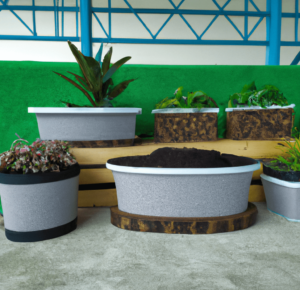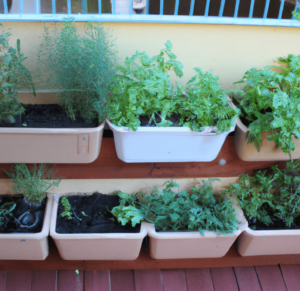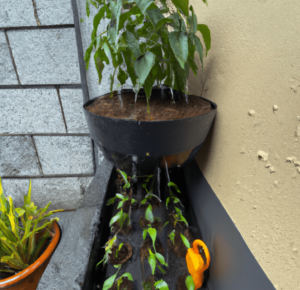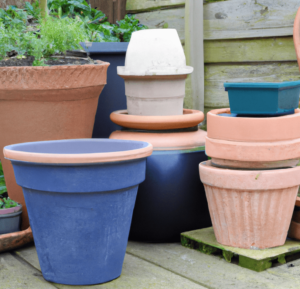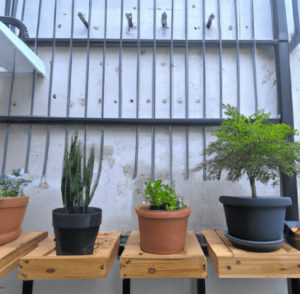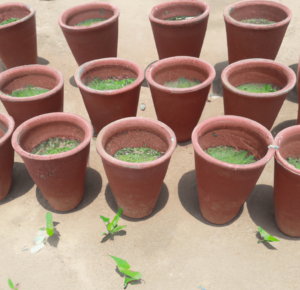Growing a range of plants in containers, such as flowers, herbs, and vegetables, is possible with the popular and adaptable gardening technique known as container gardening. Container gardening can assist you in creating a lovely and flourishing garden, regardless of whether you have a small outdoor space or merely want to add some greenery to your patio, balcony, or windowsill. We’ll walk you through the entire process of creating a container garden design from the planters to choose from and the overall design that’s best for you.
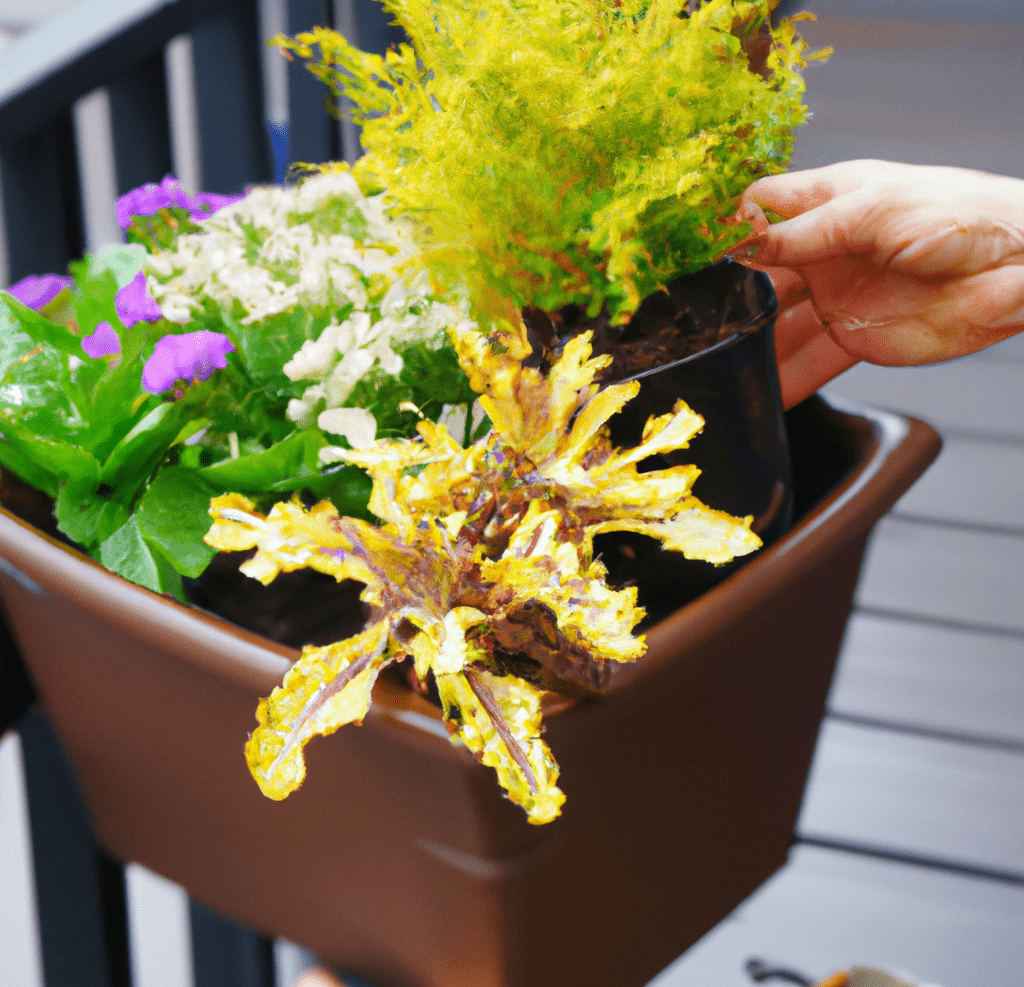
Planning
It’s critical to consider the layout of a container garden before you begin creating a container garden:
- Take into account the plant species you wish to grow as well as the color scheme you desire for your garden.
- Consider the garden containers you’ll use and whether or not they’ll go well with the plants you’ve picked.
- Take into account the available space as well as the amount of sunlight the location receives. For example, you might need different planters for vertical gardening if that’s your goal.
- Consider your plants’ needs for soil and water, especially if you are growing succulents or other plants that demand soil with good drainage. You may design a lovely and useful container garden by taking the time to plan ahead.
Choosing the Right Container
For the success of your plants and the overall appearance of your garden, you need to choose the right planters for your garden:
- Traditional garden pots, hanging baskets, containers made of wood, metal, or plastic, as well as unusual possibilities like recycled or antique containers, are just a few of the options available.
- Think about the container’s dimensions, material, and color in relation to the leaves and flowers you intend to grow there.
- In order to prevent root rot, check that the container has appropriate drainage.
- You should also think about how the container will seem in the area you have set aside for creating a container garden design.
Selecting Plants
The appropriate plants must be chosen when designing a container garden since they will make or break the garden. When you’re creating a container garden design:
- Think about the plant’s size in proportion to the garden pot as well as the size, shape, and color of the leaf.
- To create a full and lush appearance, you can either plant one giant statement plant or a variety of smaller ones.
- To ensure that each plant will thrive in its new environment, consider the lighting requirements and amount of water each one needs.
- Consider using succulents and flowering plants to create a harmonious color scheme, or use ground covers to add an intriguing ground layer.
There are countless options, so use your imagination and pick a few of your favorite plants!
Considerations for Sun Exposure, Temperature, and Water
It’s crucial to take each plant’s requirements for water, temperature, and sun exposure into account creating a container garden design. Selecting plants that will grow in your particular garden area is essential because different plants have different requirements.
For instance, although some succulents and cacti prefer more shade, others require full sun to partial shade. Research each plant’s requirements before planting because they can differ significantly in terms of temperature and water needs.
You can also do your research on the benefits of self-watering planters if you want something more low-maintenance. To establish a well-balanced and flourishing container garden, it is ideal to select a variety of plants with the complimentary sun, temperature, and water requirements.
Design
The process of creating a container garden design entails combining all the components to produce an attractive and useful area:
- It’s critical to take into account the desired plants, flowers, and foliage’s color, shape, and texture.
- To design a balanced and eye-catching garden, utilize a range of container sizes, shapes, and styles.
- Use the overall look and style you wish to achieve as a guide for your design decisions.
- To give your container garden depth and intrigue, you may also utilize garden pots of different heights and forms.
- Try out several configurations until you find a layout that suits both you and your room.
Don’t be reluctant to make modifications and alterations as you go along. Keep in mind that container gardening is a fluid and adaptive type of gardening.
Creating a Color Scheme
Choosing the proper color palette is essential for creating a container garden design. A carefully chosen color system can make a garden look intentional and coherent, whereas a carelessly chosen color scheme might make the garden appear disjointed and chaotic.
For your container garden, you can use a variety of color schemes, such as monochromatic, complimentary, analogous, and triadic. In addition to taking each plant’s growing environment into account, the trick is to select plants and blooms that contrast each other in terms of texture and color.
To discover the ideal balance for your garden, don’t be afraid to experiment and play with different color and texture combinations.
Combining Different Textures and Heights
In creating a container garden design, blending various plant heights and textures results in an eye-catching garden design.
- Smaller, flowering plants can have a backdrop created by adding taller plants, such as grasses or bamboo.
- Your container garden can provide depth and intrigue by incorporating plants with different textures, such as succulents with their mushy leaves or ferns with their delicate fronds.
You can design a beautiful and eye-catching garden that will provide beauty and interest throughout the growing season by experimenting with various plant combinations.
Choosing the Right Layout
It’s crucial to take the layout and arrangement of your plants and containers into account when creating a container garden design. Consider how much room you have to work with and how you want to use it. You could wish to set up your containers in a compact, space-saving fashion if your patio or balcony is small. You can design a more roomy, open style if your garden is larger.
Your garden’s overall appearance and atmosphere might be affected by how you arrange your containers. For instance, you may arrange containers in pairs to produce a symmetrical pattern or you can arrange them in clusters for a more natural appearance. Additionally, to add aesthetic appeal to your garden, you can utilize containers in a variety of sizes, shapes, and colors.
Incorporating Focal Points
In addition to choosing colorful plants for your container garden, you should also include items that serve as garden focal points. These components can include everything from lovely greenery to colorful vegetables and flowers.
To give your garden design an extra boost of interest, think about using an intriguing container or adding components like garden sculptures or birdhouses. Your container garden will be not only aesthetically pleasing but also a fantastic conversation starter for visitors if you concentrate on including focal points. Planting
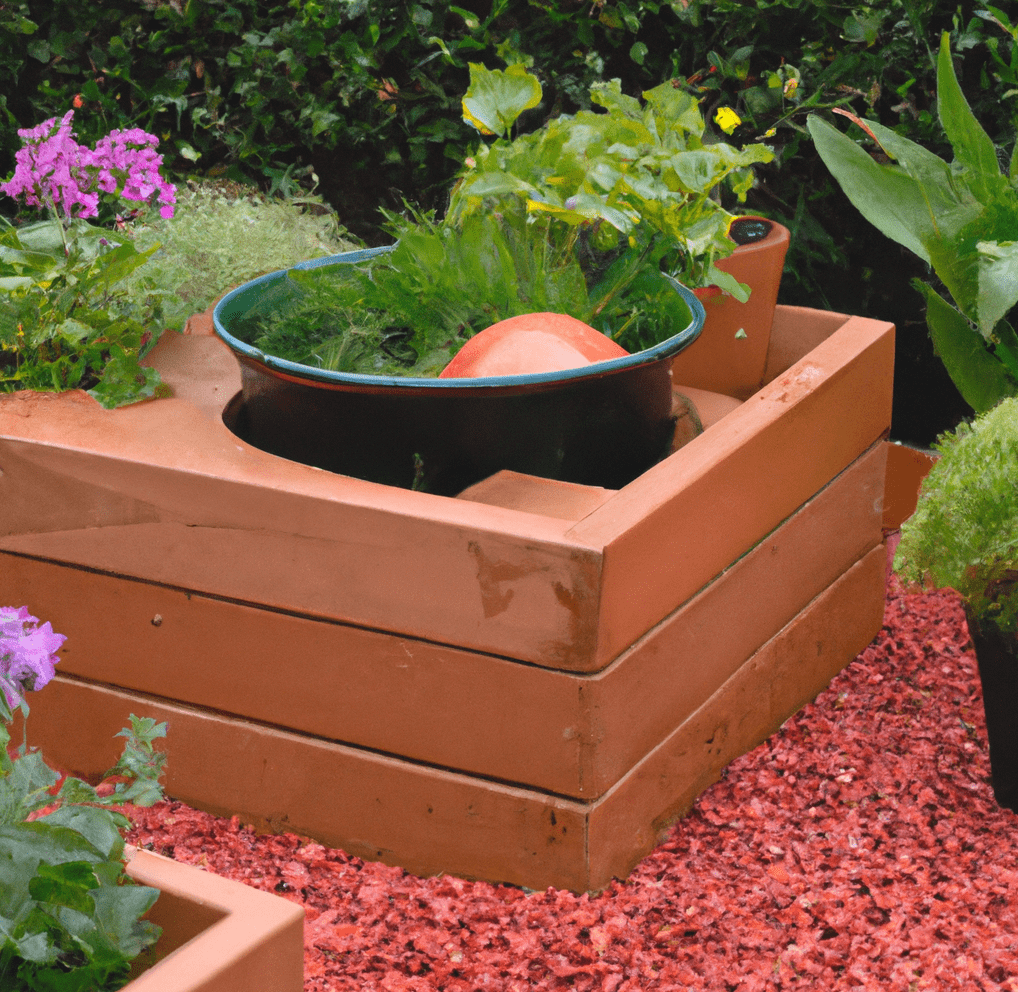
It’s crucial to remember to correctly place the flowers and plants in the garden pots when creating a container garden design:
- Make sure to examine the soil type, water requirements, and depth and space needed for each plant.
- Consider using a high-quality soil mix and routine fertilization to maintain the container garden looking its best.
- To guarantee an aesthetically acceptable and balanced arrangement, it may also be good to arrange the garden pots in the desired pattern before planting.
For anybody interested in gardening and bringing color and life to their outside space, planting can be a joyful and rewarding experience with proper planning.
Preparing the Container
To ensure the health and growth of your plants, it is crucial to thoroughly prepare the container before planting in your container garden:
- The container must first be properly cleaned, making care to get rid of any dirt or debris that may have gathered over time.
- Check the container’s drainage holes after cleaning to ensure that any surplus water can drain.
- To avoid root rot, which can damage your plants, do this. In order to facilitate water flow, additionally think about placing a layer of gravel or other drainage material at the bottom of the container.
After preparing your container, you may start planting the plants, flowers, or foliage of your choice to make a stunning and colorful container garden.
Planting Techniques
The right planting methods are essential to creating a container garden design:
- When planting, it’s vital to take into account the plants’ size, growth pattern, and the space that is available in the container. A container garden can appear better overall and have more area for the plants to develop if the plants are placed and arranged properly.
- Consider growing clusters of similar-colored flowers or foliage for the most colorful effect. To produce a harmonious arrangement, it’s a good rule of thumb to utilize odd numbers of plants, like three or five. Shorter plants can be positioned at the front or along the edges of the container, while taller plants should be placed in the rear or middle of the container.
- To avoid root rot, moisten the soil well before planting and give adequate drainage. A slow-release fertilizer may also be added to encourage strong plant development.
You can develop a magnificent and flourishing container garden that adds color, texture, and beauty to your indoor or outdoor environment with a little forethought and ingenuity.
Caring for the Plants
Maintaining the health and success of your container garden depends on taking good care of your plants. When choosing plants, it’s necessary to take into account their size, water needs, and sunshine requirements because every plant has different requirements:
- To ensure that your plants can coexist successfully in the same container, choose plants that prefer similar growing conditions.
- It’ll be easier to maintain healthy plants and vibrant flowers and foliage with regular watering and fertilizing.
- To prevent problems from spreading to other plants in the container garden, take immediate action if you spot any problems with the plants.
Maintenance
Our plants, flowers, and foliage can thrive in a lovely, rich environment if your container garden is kept up. To ensure that your garden grows and keeps giving you the advantages you want, regular upkeep is essential. Watering, fertilizing, trimming, and overwintering are a few crucial elements of container garden management after you’ve learned everything about creating a container garden design:
- To keep the soil moist, you must consistently and frequently water your plants. The sort of plants you have, the size of the containers, and the weather all affect how much and how often you should water them.
- The nutrients that plants require to grow and thrive are provided by fertilizer. Regularly fertilize your plants as directed on the packaging of the fertilizer you’re using.
- Pruning your plants on a regular basis promotes new growth and keeps them healthy. Pruning also contributes to the orderly appearance of your container garden.
- While some plants may spend the winter indoors, others require protection from frost. To make sure that the plants in your container garden survive the winter, be sure to do your study on their unique needs.
Bottom Line: Creating a Container Garden Design
A fantastic way to bring a little bit of nature into any place is to build a container garden. Whether you’re an experienced gardener or a novice, growing plants, flowers, and even veggies in containers is enjoyable and simple.
You’ve learned all about creating a container garden design that delights you and those around you by planning, picking the appropriate containers, picking the appropriate plants, taking into account sun exposure, temperature, and water, and constructing a beautiful layout.
Creating a Container Garden Design FAQs
What is container gardening?
Growing a variety of plants, including flowers, herbs, and vegetables in containers, is a well-liked and flexible gardening approach. People who want to add greenery to their patio, balcony, or windowsill or who have limited outdoor area should engage in this form of gardening.
What factors should I take into account when designing my container garden?
The plant species you want to grow, the amount of space you have, and the quantity of sunlight the area receives should all be considered while designing your container garden. Additionally, think about the color scheme you want for your garden, the garden containers you’ll use, and the soil and water requirements of your plants.
How should I pick the ideal container for my garden?
Think about a container’s size, construction, color, and drainage when selecting one for your garden. Verify that the container complements the plants you’ve chosen and looks nice in the space you’ve designated for your container garden design.
What factors should I take into account while choosing plants for my container garden design?
Consider the plant’s size in relation to the garden pot, the lighting needs, and the quantity of water each plant need when choosing plants for your container garden design. You can use ground covers to add an intriguing ground layer or succulents and blooming plants to make a color scheme that is harmonious.
What should I consider while designing my container garden in terms of sun exposure, temperature, and water?
When planning a container garden, it’s critical to consider the needs of each plant in terms of water, temperature, and sunlight. Before planting, learn about the requirements of each plant and choose ones that will flourish in your particular garden space.
When planning my container garden, what should I keep in mind?
Consider the color, form, and texture of the desired plants, flowers, and foliage while planning your container garden. To design a well-balanced and attractive garden, use a variety of container sizes, shapes, and styles. Because container gardening is a flexible and adaptable form of gardening, don’t be afraid to make changes as you go along.
What color scheme should my container garden design have?
The proper color scheme must be picked while designing a container garden. To discover the perfect balance for your landscape, try out several color and texture combinations. A range of color schemes, including monochromatic, complementary, analogous, and triadic, should be taken into consideration.
How do I design a container garden that incorporates a variety of textures and heights?
A striking garden design can be made by combining different plant heights and textures. By including plants with various textures, such as ferns with their delicate fronds or succulents with their squishy leaves, you can add depth and curiosity. To determine the best arrangement for your garden, try out several plant combinations.


